Lairmairrener, Paredarerme, Pyemmairrener, Tyerrernotepanner and Tommeginne Country
I flew from my home state of WA into Hobart and picked up the hire car and straight away headed out with great anticipation to my first site
Mt Field National park – 2 nights (28th/29th Nov)

Accommodation – National Park Hotel 300m outside park entrance, where the owners have excellent advice on numerous local Platypus viewing spots.
National Park Hotel.

Platypus.
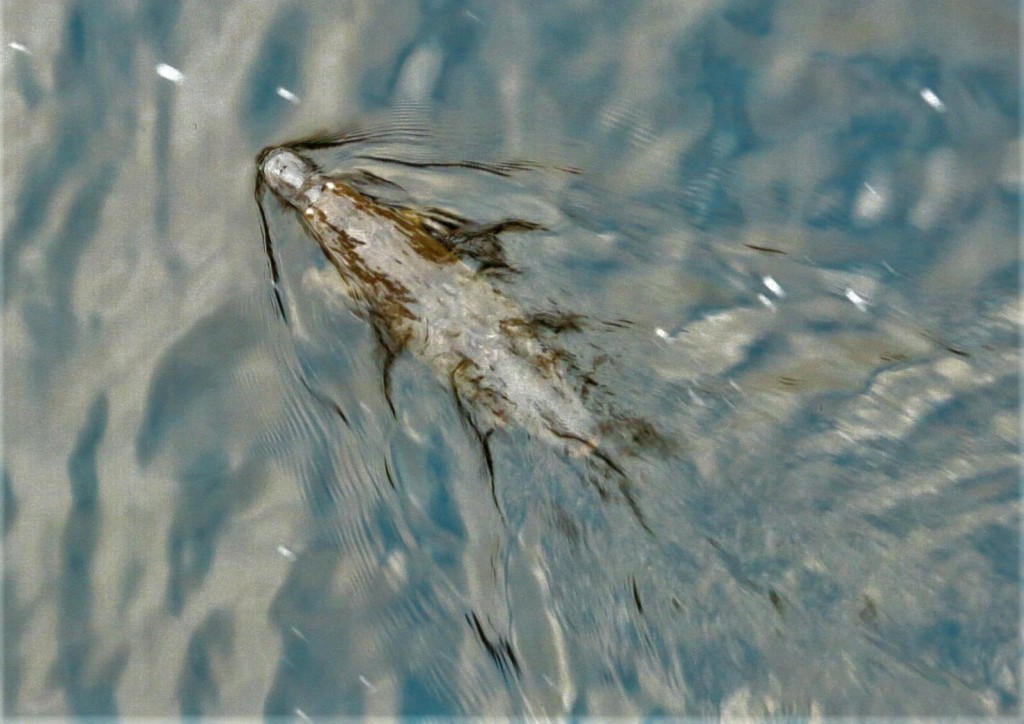
Species – Tasmanian Pademelons seen on Russell Falls Track early morning and late afternoon. Great views of Platypus 1 hour before sunset on disused railway bridge just outside of National Park. The real action however starts half an hour after dark on the grassy lawn immediately inside the park boundary (opposite the Visitor Centre) and included extremely numerous Pademelons, Brushtail Possums, Eastern-barred Bandicoots and Eastern Quolls (both fawn and dark morphs.) In fact, wildlife was so prolific I nearly fell over a Bandicoot whilst trying to photograph a Quoll! Both nights produced the same species listed above.
Eastern Quoll (fawn morph.)
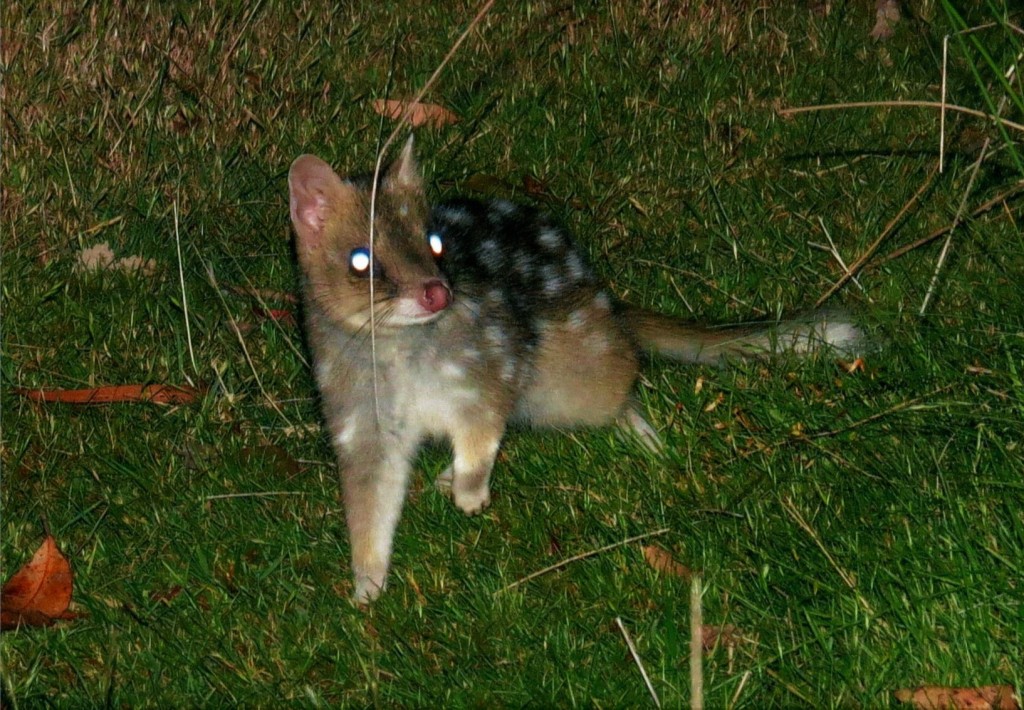
Brushtail Possum.

Red-bellied Pademelon.

Eastern Quoll (Dark Morph.)
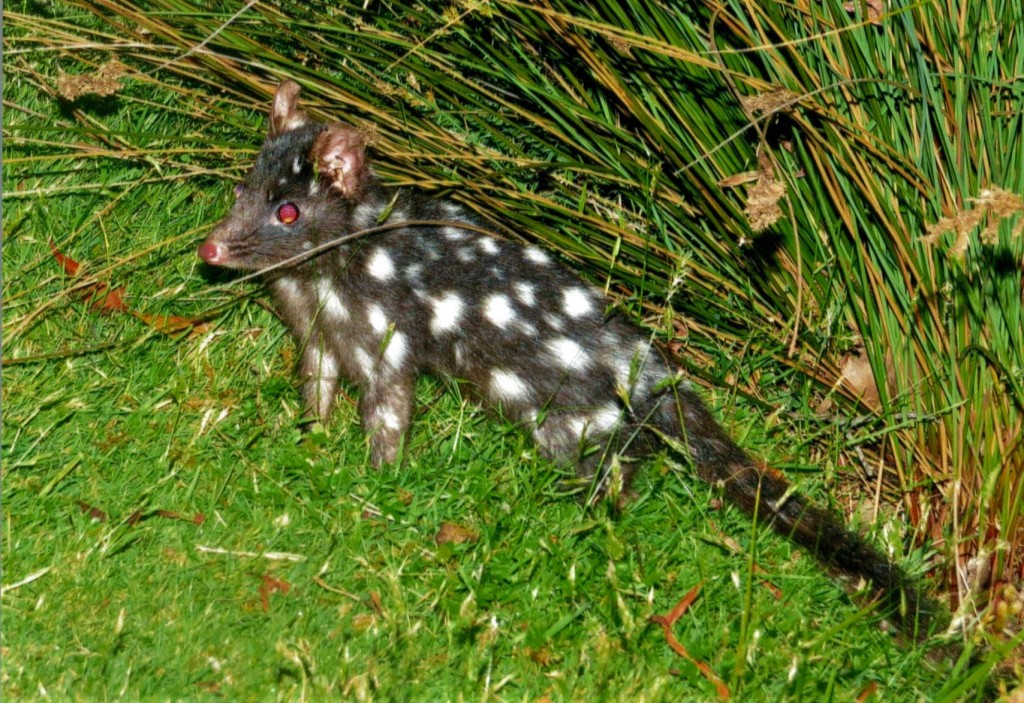
Eastern-barred Bandicoot.
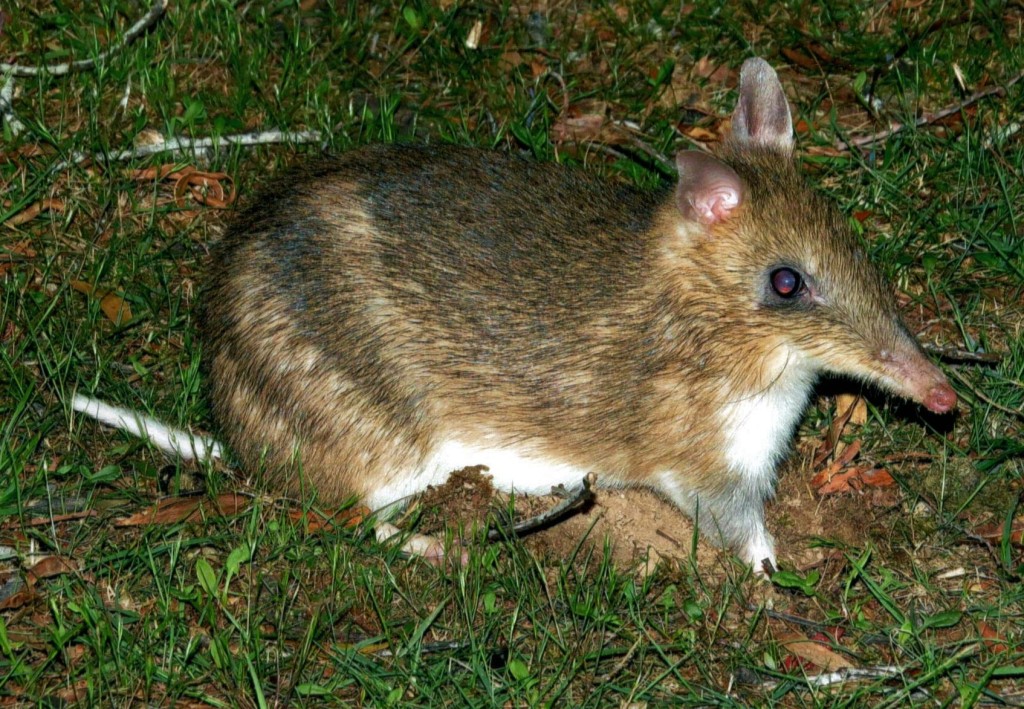
An afternoon drive to Lake Dobson gave great views of Bennett’s Wallaby
(Red-necked Wallaby) on the circular walk around the lake. Echidna spotted late afternoon at ponds near National Park Hotel whilst looking for Platypus.
Bennett’s Wallaby.

Interestingly the Western Quoll (Chuditch) of WA are more arboreal than the Eastern Quolls found in Tasmania which when pressed do not take to the trees, making them harder to view. This is probably an adaptation of the Chuditch to the presence of the European Fox in WA that is absent in Tasmania.
Maria Island National park – 2 nights ( 30th Nov / 1st Dec )

Accommodation – Convict Penitentiary for which own bedding and provisions are needed as there are no shops on Maria Island.
Convict Penitentiary – Maria Island.
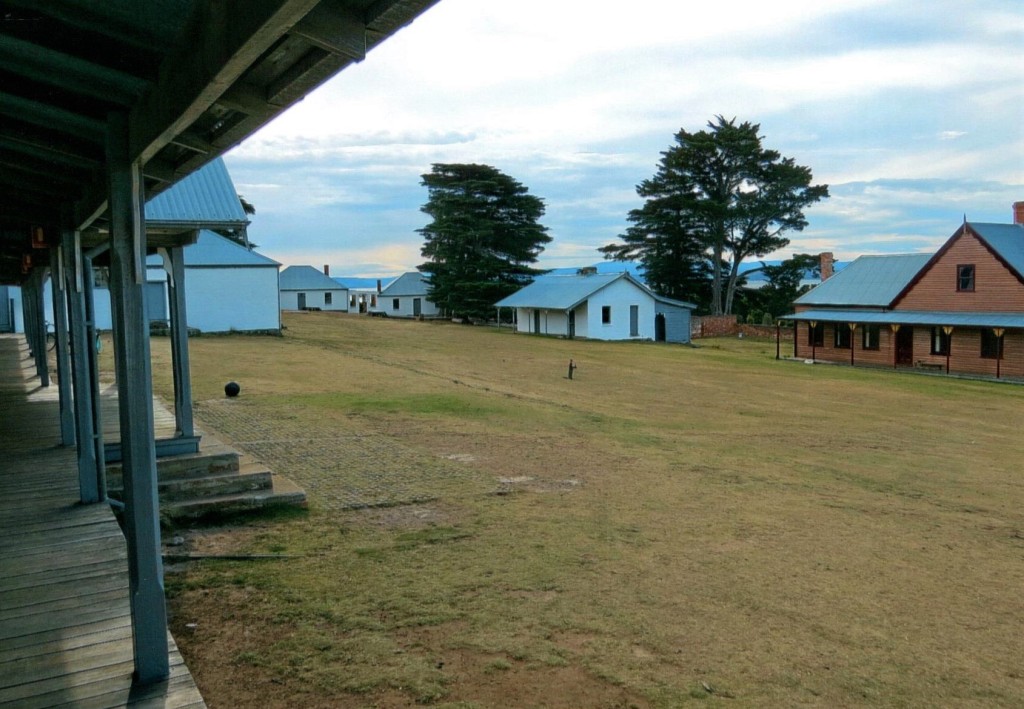
Species – Stepping off the ferry it is impossible to miss the abundant wildlife of the island. I was extremely fortunate Tasmanian Devils were denning under the Penitentiary during my stay and the Devil Cubs were easy to photograph basking in the afternoon sun. I came across Devils both nights I stayed at the Penitentiary as they set out on their nightly foraging expeditions. In addition to Devils, Common Wombats, Cape Barren Geese and Pademelons were common around the Penitentiary during the day, whilst at night Brushtail Possums were easily seen. The walk around the North of the island past the airstrip in the late afternoon produced Eastern Grey Kangaroos (Forester Kangaroos,) Bennett’s Wallaby and Wombats, whilst a day hike to the summit of Mt Maria gave views of Bennett’s Wallaby as well as numerous Echidna foraging amongst the fallen timber of the sclerophyll forest in the warmer part of the day. Unfortunately, a spotlight along the Reservoir Track looking for Long-nosed Potoroos was rained off during the second night on the island.
Tasmanian Devil Cub.
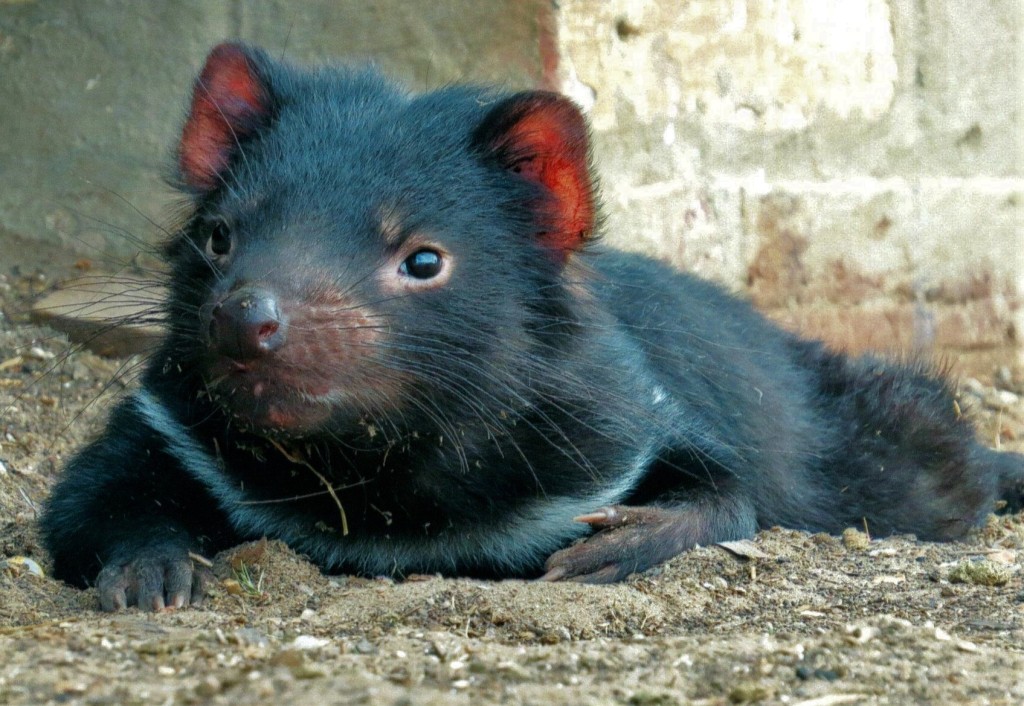
Tasmanian Devil.
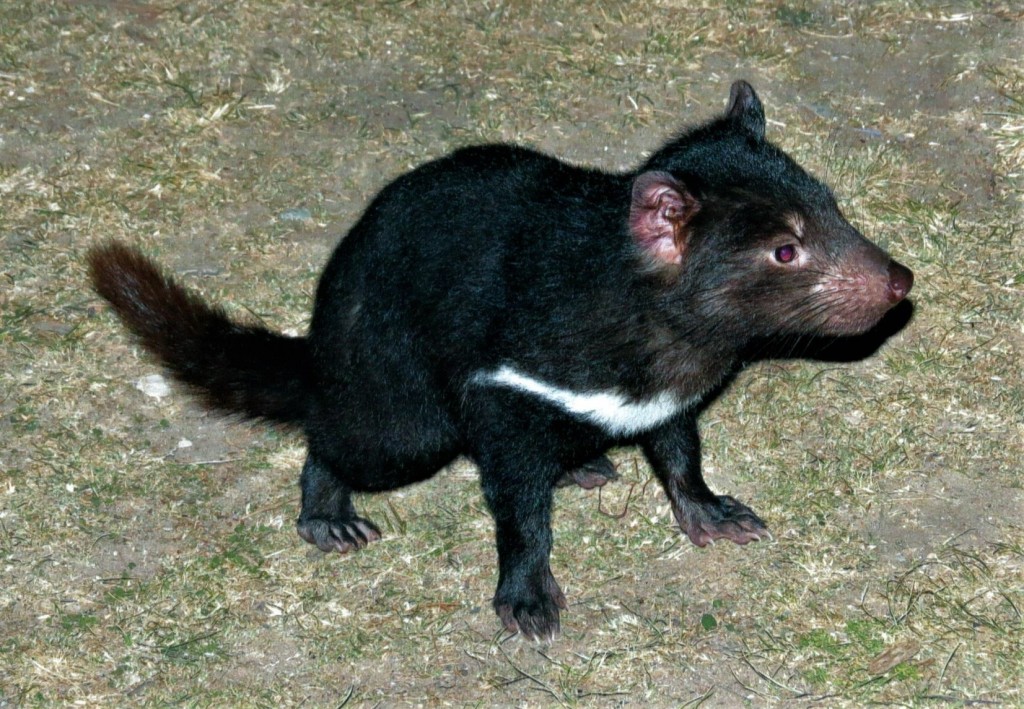
Forester Kangaroos.
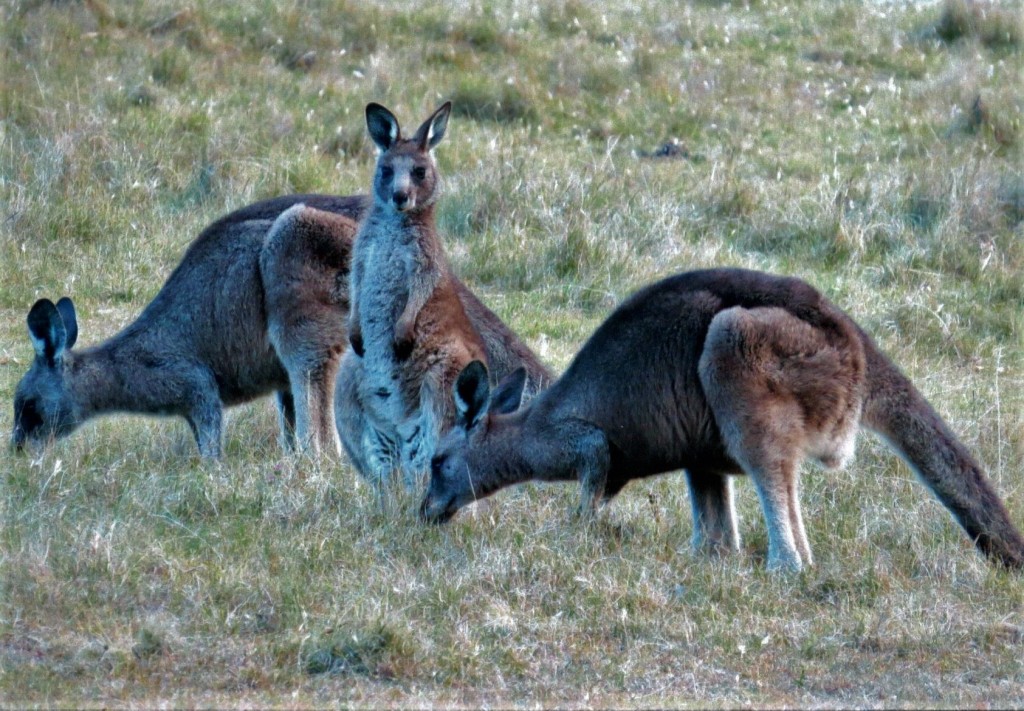
Echidna.

Cape Barren Goose.
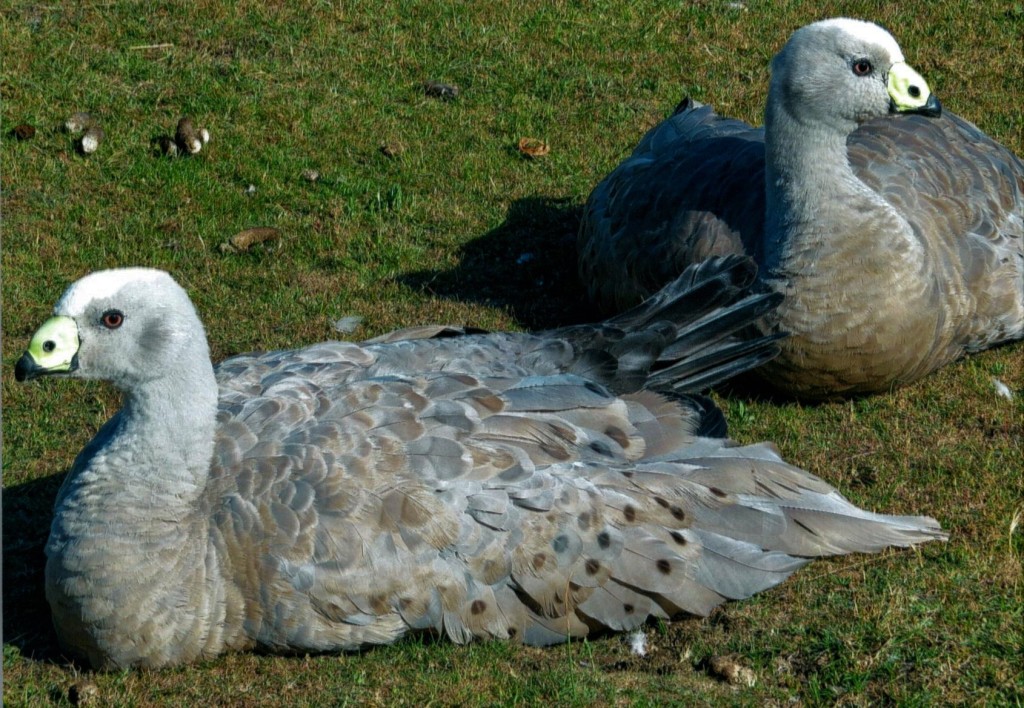
Mt William National Park – 2 nights ( 2nd / 3rd Dec )
Accommodation – Gladstone Hotel the nearest town to Mt William.
I was delighted on approach to Gladstone to find a beautiful Blotched Blue-tongued Lizard crossing the road into town and stopped to take a few pictures of this the largest Lizard in Tasmania.
Blotched Blue-tongued Lizard.

Species – Mt William is definitely up there with the other Tasmanian National parks but unfortunately all the species viewed at Mt William had already been seen at previous National parks on the trip. Brushtail Possums are common at the campgrounds and with a late afternoon drive around the roads in the park large numbers of Common Wombat, Bennett’s Wallaby, Pademelons and Forester Kangaroos are easy to see.
Common Wombat.

Brushtail Possums are also common on the C843 road into the park from Gladstone after dark. During a day drive in Mt William I came across researchers from the University of Tasmania trapping Devils (they kindly showed me one in a trap from the previous nights trapping.) Devils are now being released into Mt William after their recent population crash due to Devil Tumour Facial Disease (DFTD.) Unsurprisingly, this has resulted in a lowering of the both Eastern and Spotted-tailed Quoll populations at Mt William due to competition with the Devils. However, the local policeman at Gladstone occasionally still sees Quolls on the Gladstone to Bridport road at night, feeding on roadkill.
Narawntapu National park – 2 nights (4th / 5th Dec)
Accommodation – I stayed at Port Sorrell the nearest town to Narawntapu which is a 25km drive from the National park on the other side of the estuary.
Species – Pademelons can be seen during the day at Narawntapu on the track leading out from the Visitor Centre to the Bird Hide, but as usual dusk is the highlight of the day when Forester Kangaroos, Bennett’s Wallaby, Pademelons and Wombats come out onto the open lawns around the Visitor Centre to feed.
Grazing Macropods.
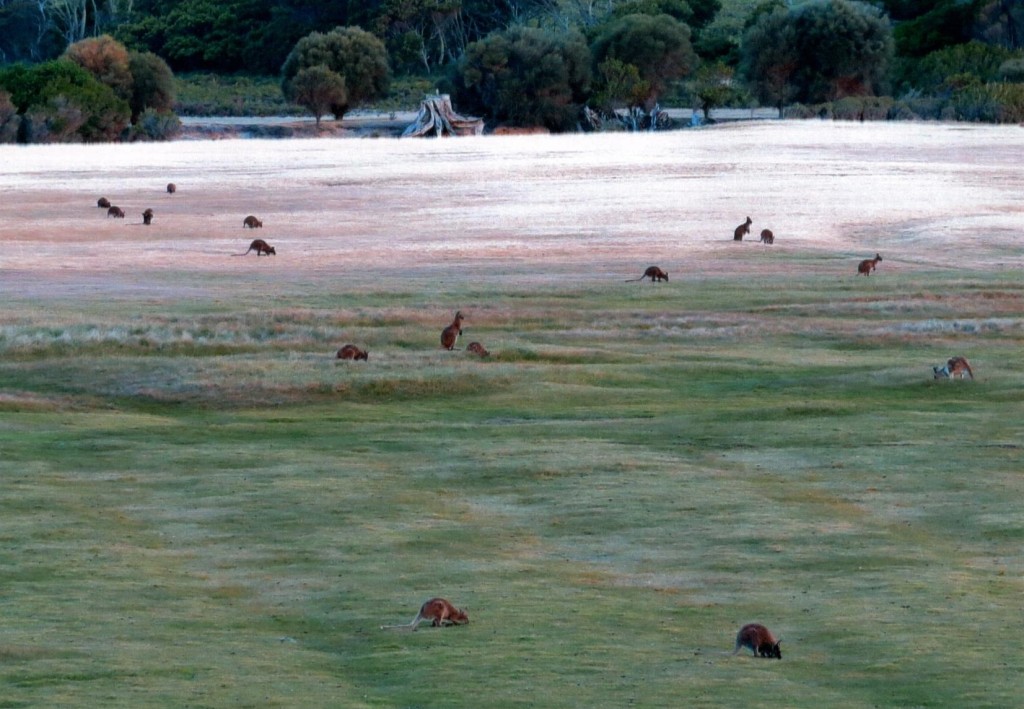
Forester Kangaroos Sparring.

A night drive on the C741 to Yorktown produced only Pademelons but the real highlight of the area is the C740. A couple of Kilometres outside the national park I came across my first Ringtail Possum in Tasmania slowly crossing the road. I was also pleased to find a Banjo Frog sitting nonchalantly on the road.
Ringtail Possum.
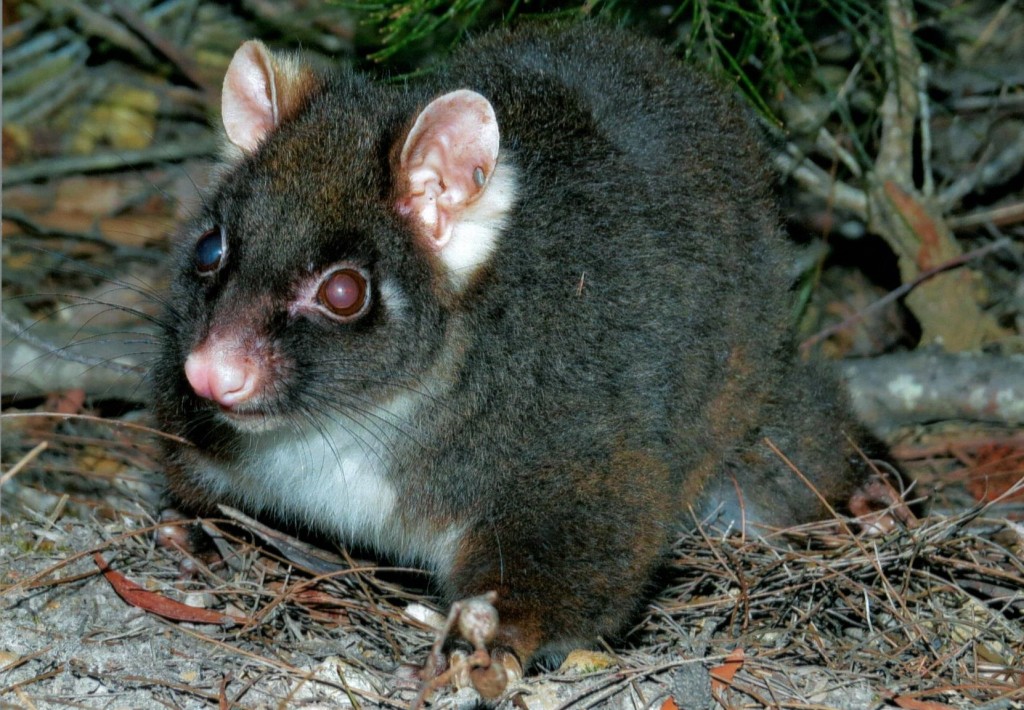
Eastern Banjo Frog.

Also on the C470, there is a Southern Bettong colony about 2km from the intersection of the C470 with the B71 in the pine forest (from memory the 5th track into pine forest from intersection.)
Southern (Tasmanian) Bettong.
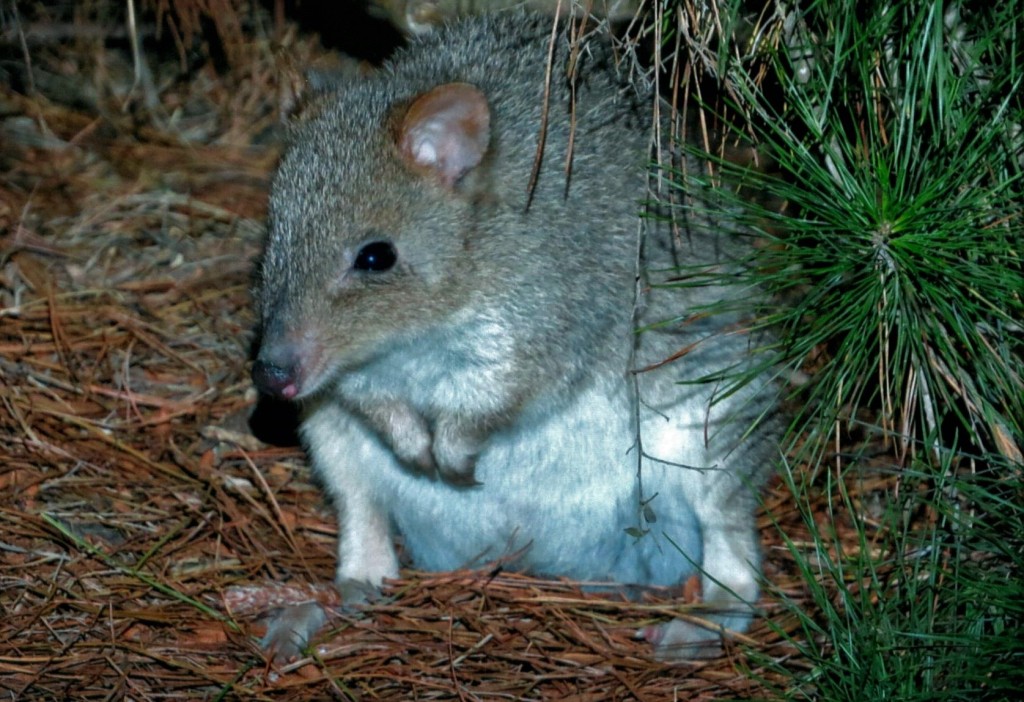
Whilst the drive back to Port Sorell from Narawntapu is a long one at night going 60km per hour I did get to see a Southern Brown Bandicoot foraging just outside of the town.
The following morning driving to Loongana I came across a freshly killed Spotted-tailed Quoll dead on the road (DOR) just outside Port Sorell that had not been there the previous night, as this was the second Spotted-tailed Quoll DOR I came across in the area I conclude that although I didn’t see any live Quolls this area must still be good for this species.
Mountain Valley Wilderness Cabins – 3 nights (6th / 7th / 8th Dec)
Devils Elbow – Leven Canyon.

Accommodation – Loongana where you can watch the wildlife feed directly from your cabin.
Inside the Cabins at Mountain Valley.

Species – All three nights at Loongana I had extensive views of multiple Platypus in the river that runs through the property on a free guided tour by the very knowledgable Len. Also, on the guided tour we saw Pademelons and Wombats.
Platypus.
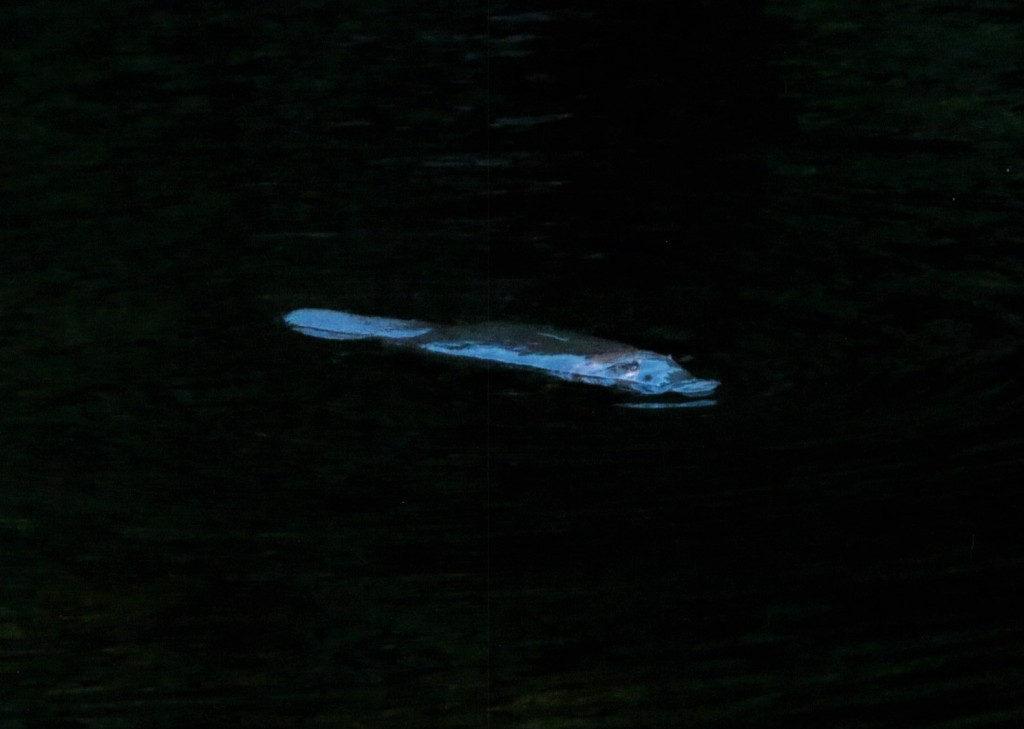
Night 1 – 30 mins after dusk a Spotted-tailed Quoll came outside the cabin to feed on the chicken put out by Len, satisfied I had an early night. During the night I got up to find a Tasmanian Devil feeding outside my cabin about 1am.
Night 2 –Unfortunately the second night was ruined for all by a guest running around outside with a flashlight, the owners suggest not leaving the cabin during the night as it will scare the wildlife, it is for good reason.
Night 3. – Again 30 mins after dark I was visited by a Spotted-tailed Quoll which fed outside my cabin for 2-3 mins then returned twice more to carry off more chicken before the arrival of the Devils which arrived shortly after. I watched a beautiful Devil (sadly with DFTD) feed outside my cabin for over 30 mins and wow could this little Devil put it away. Two whole chickens later he waddled off into the night belly fully distended, I assume very happy!
Loongana truly is a gem of a wildlife experience and although I didn’t take any photos of the night feeding it is allowed it was just a personal choice.
Cradle mountain – 2 nights (9th / 10th Dec)

Accommodation – the aptly named Ringtail Cabin at Cradle Valley Highlander Cottages.
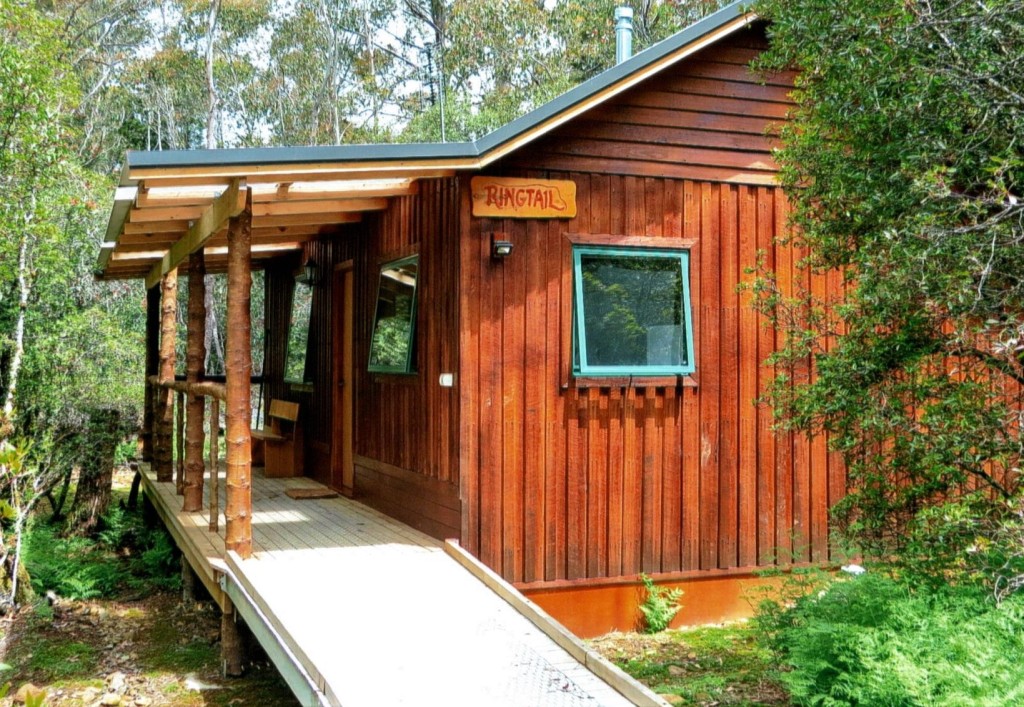
Species – prime viewing of a Ringtail Possum from the balcony of my cabin both nights. Echidna on the Pencil Pine Walk. Numerous Bennett’s Wallaby, Pademelons on the Cradle Valley Walk. Numerous Bennett’s Wallaby (including long haired form) and Wombat in the Tourist Village where most of the accommodation is situated. Brushtail Possums, Bennett’s Wallaby and Pademelons on the drive to Dove Lake spotlighting after dark.
Bennett’s Wallaby (Long-haired Variety.)

Ringtail Possum.

Sadly, this was the end of my time in Tasmania and from here it was a short drive down to Devonport to catch my flights back to WA.
#QuollingAround
2 thoughts on “Mammal Watching Trip Tasmania – Nov/Dec 2015”